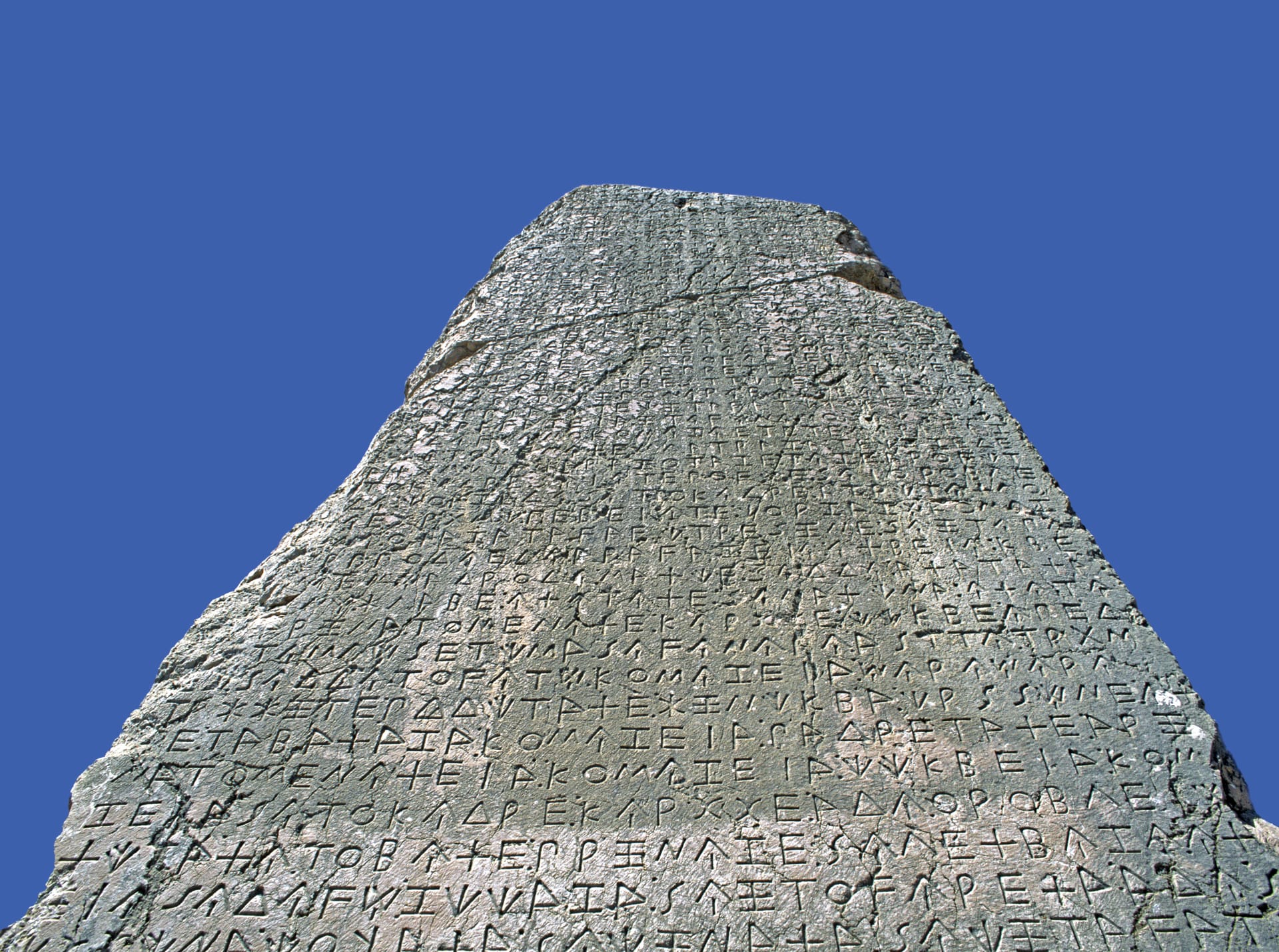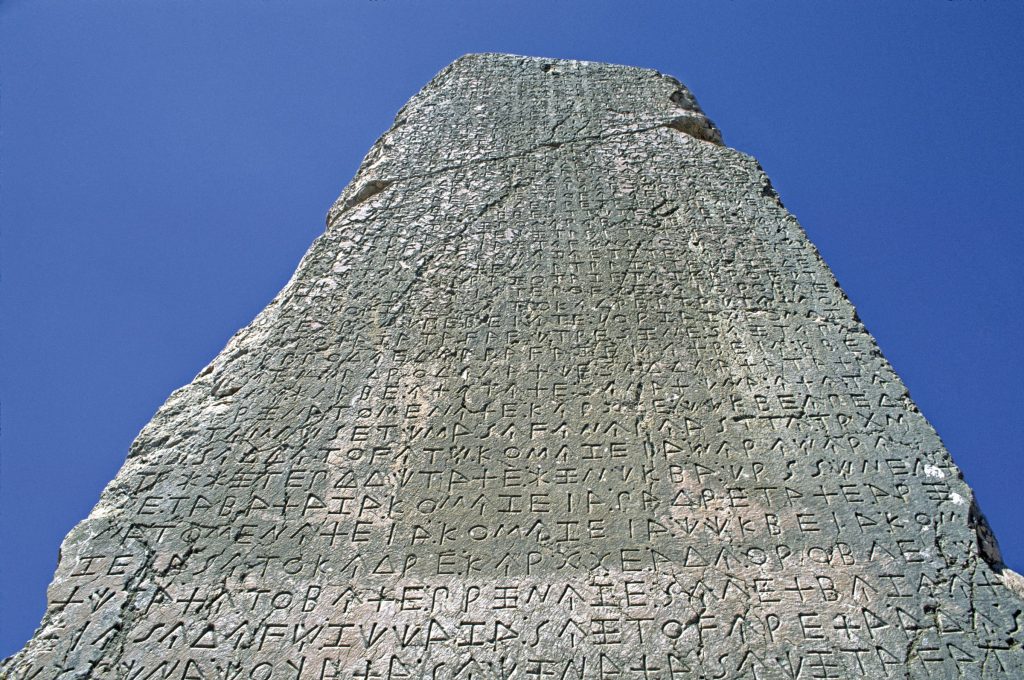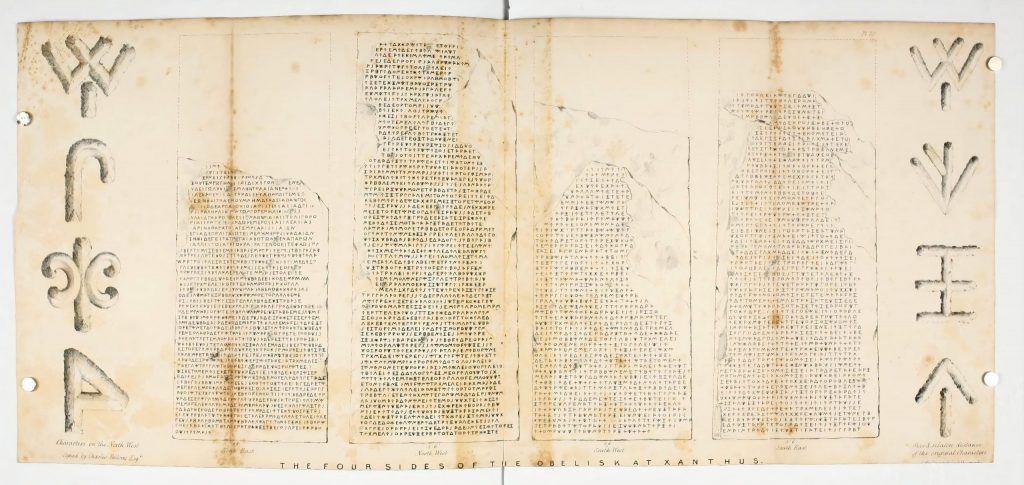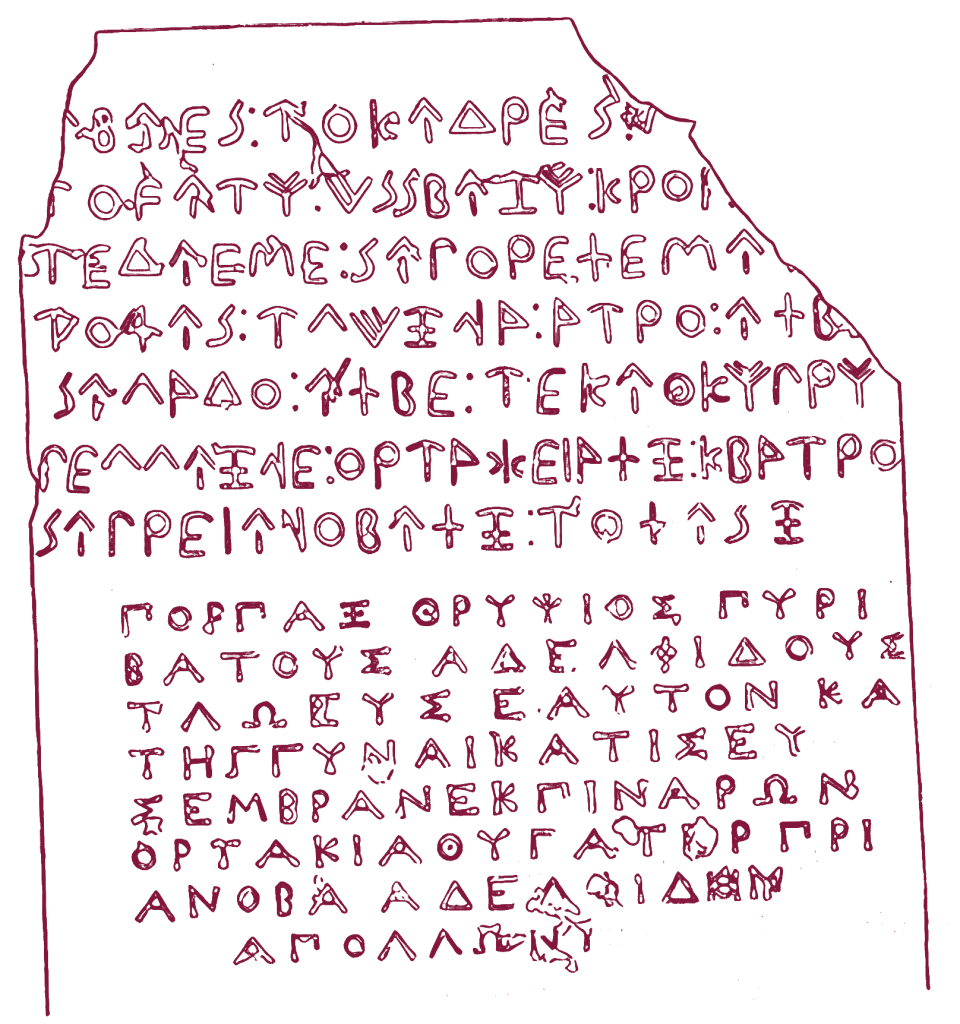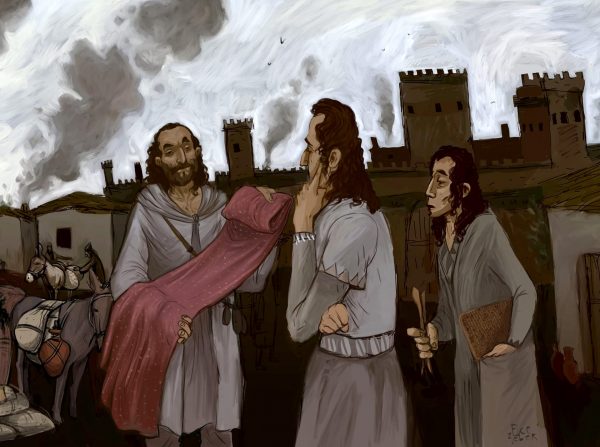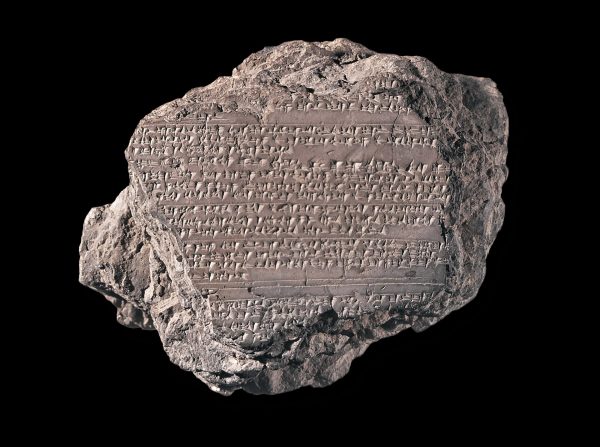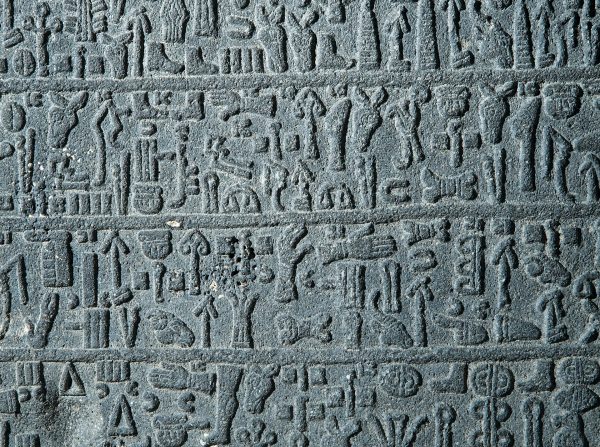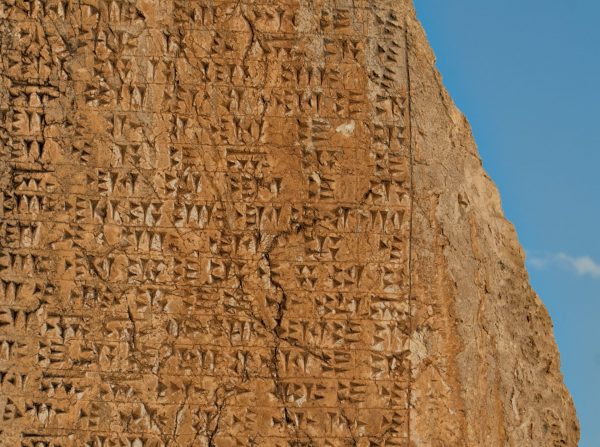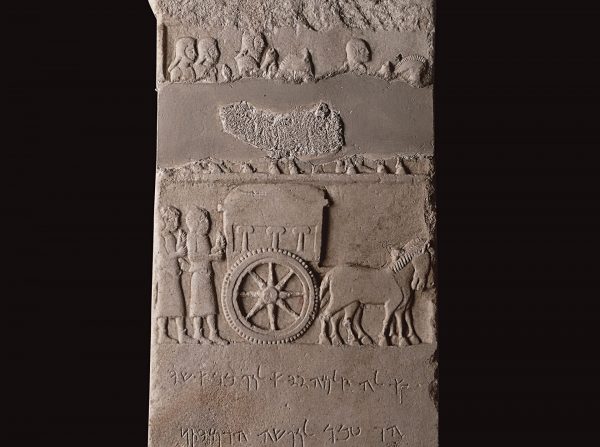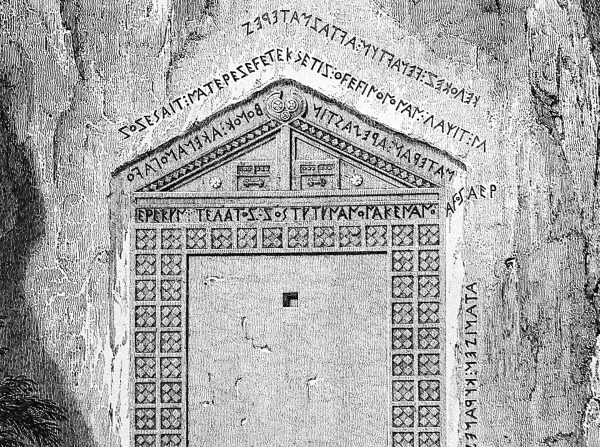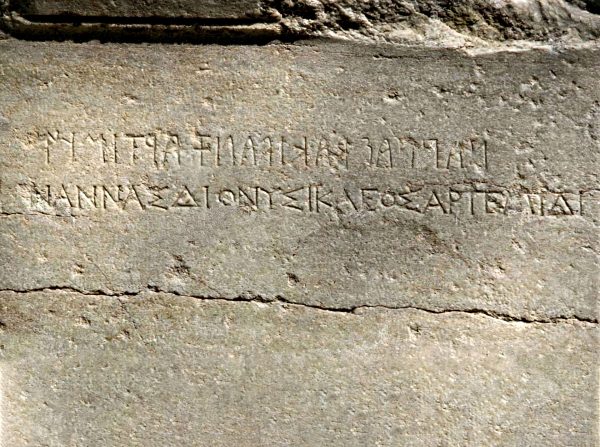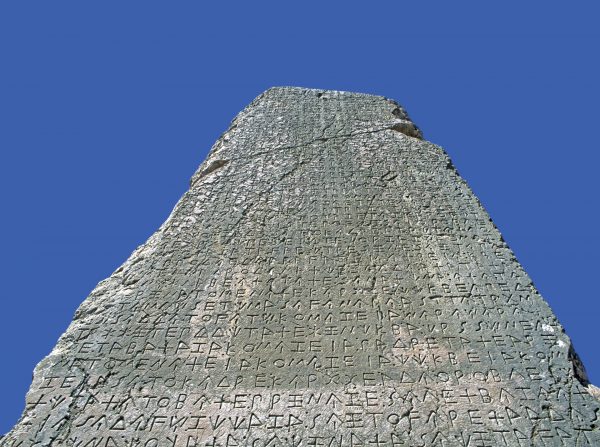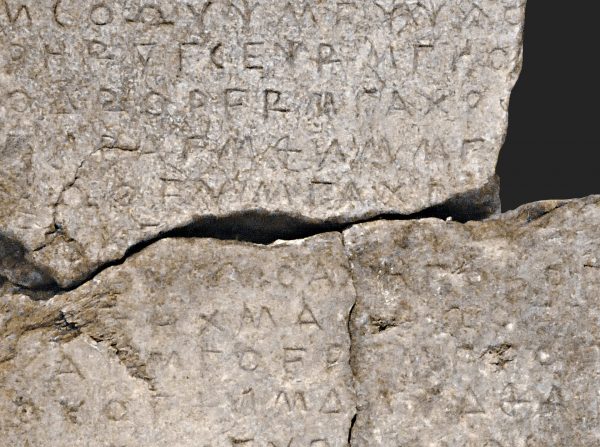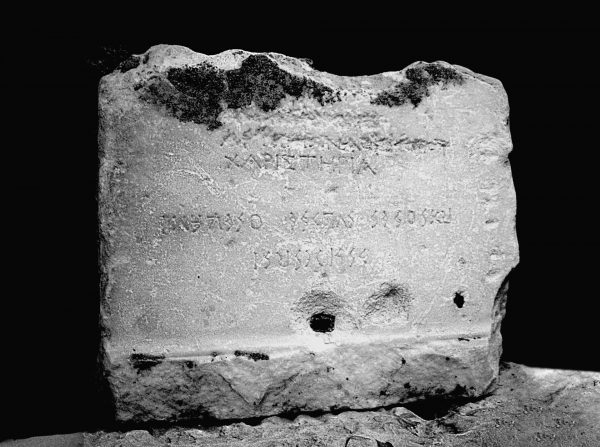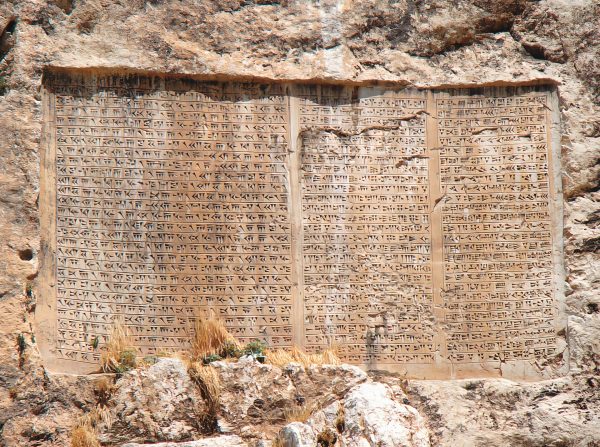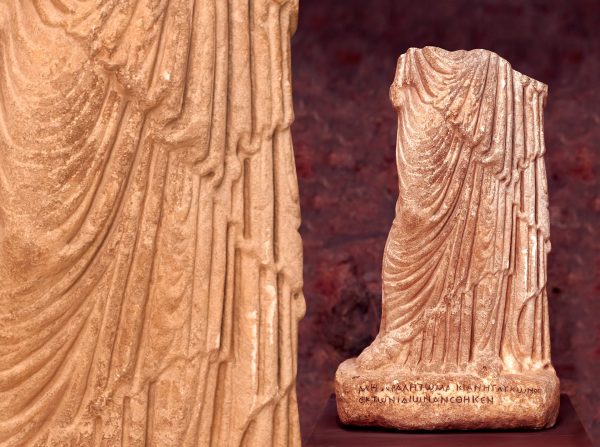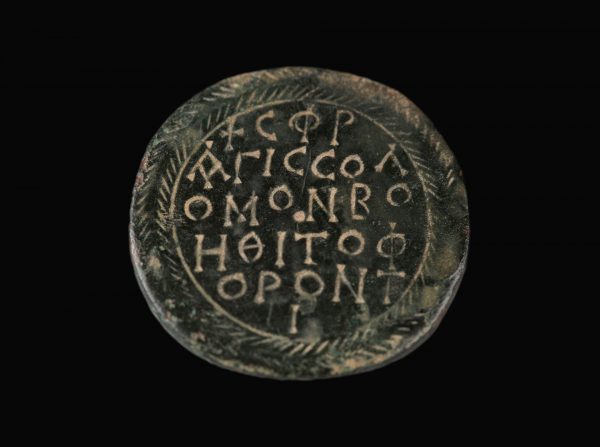Meaning “to luminate” in Hittite, the word Lukka or Lukki and its Hellenic counterpart Lykoioi were possibly used to define the Lycians. The Lycians, on the other hand, referred to themselves as Trimmise, which means “zenith of the mountain” in Luwian. Encountered on many inscriptions and coins from 5th century BC, Lycian was discovered for the first time by Western travelers in the 19th century. Related to ancient Anatolian languages, it is cognate with Luwian. Similar to other Anatolian languages, Lycian is a neuter gender language, though there is a distinction between animate and inanimate words.
The order of the Lycian alphabet is unknown: a a b d e ẽ g h χ i j k l m m̃ n n p q r s t τ θ u w z. In addition, the transliteration of two letters still remains undecided. It is believed that the vowels a and ẽ correspond to the nasal vowels a and e.

